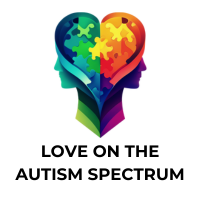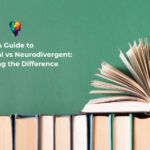Have you ever paid attention to the rhythm of your heartbeat when you’re nervous or noticed how your stomach churns when you’re anxious? These internal sensations, often overlooked, form the basis of interoception – an essential yet often overlooked aspect of our mental and physical health. Interoception is our body’s internal communication system, a silent conversation between the brain and the body that influences everything from our emotions to our decision-making processes.
Unpacking this silent dialogue can unveil a world of understanding about our health and well-being. Imagine being able to fine-tune this internal communication, harnessing it to enhance emotional regulation, cognitive processing, and even physical performance. This might sound like a tall order, but research in interoception shows us that it’s possible and vital to our well-being.
So, in this blog post, let’s embark on a journey into interoception, understanding its foundations, its impact on our emotions and decision-making, how it develops and changes throughout our lifespan, and how we can enhance it through contemplative practices. We’ll also explore the practical applications of interoceptive research, providing a well-rounded understanding of this fascinating field.
Key Takeaways
Interoception refers to sensing, interpreting, and reacting to internal bodily signals. It plays a crucial role in preserving homeostasis and can potentially affect emotional regulation and susceptibility to mental health challenges.
Individual differences in interoceptive abilities—such as attention to and accuracy of perceiving internal bodily signals—can impact mental and physical health, influencing emotional experiences and decision-making processes.
Practices like mindfulness meditation, yoga, and tai chi can enhance interoceptive awareness and accuracy, potentially improving emotional regulation, cognitive functioning, and overall well-being at various stages of life.
The Foundations of Interoception
Interoception is fundamentally about sensing, interpreting, and reacting to internal bodily signals. It functions much like an ongoing, silent exchange between your mind and body, observing everything from:
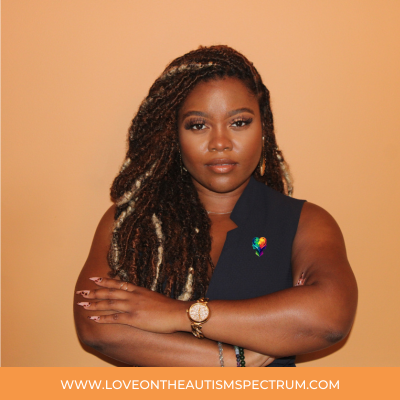
heartbeat rate
hunger pangs
body temperature
breathing rate
thirst
pain
muscle tension
This continuous internal dialogue is key in preserving homeostasis, the body’s balance, because interoceptive signals constantly align with the body’s homeostatic requirements.
Interoceptive processes may significantly affect our capacity for emotional regulation and susceptibility to mental health challenges. It’s not just about physical sensations; interoception also plays a crucial role in our emotional and cognitive experiences. Interoception aids in comprehending and interpreting our emotions, directing our reactions to various circumstances.
But how does this quiet dialogue occur? Insights from the field of neuroscience provide the answer. Signals from the body are transmitted to the brain via the glossopharyngeal and vagus nerves. Next, these signals journey through the thalamus, forwarding the information to various brain areas like the insula, thereby playing a significant role in the interoceptive processing of internal sensations.
Interoception Definition
Interoception is how we detect, comprehend, and respond to internal bodily signals. While it encompasses a wide array of physiological signals, it’s distinct from visceroception, which involves explicitly perceiving signals originating from internal organs such as the heart and stomach.
Examples of interoceptive sensations include:
Hunger
Thirst
The need to breathe (air hunger)
Sexual arousal and orgasm
Nausea
The urge to use the restroom (void)
These sensations, regulated by the central nervous system, provide constant information about our body’s internal state. Our internal organs, muscles, and tissues send signals to the brain about body temperature, heart rate, and digestion, allowing us to maintain homeostasis—the balance of our internal systems.
Interoception also plays a crucial role in our emotional well-being by allowing us to regulate our emotions based on bodily sensations. For example, when we feel stressed or anxious, we might experience physical symptoms such as increased heart rate or tense muscles. By recognizing these interoceptive cues, we can then take steps to reduce stress and promote relaxation.
The Interplay with Emotions
Emotions are complex experiences that involve both physiological and psychological components. Interoception is one key factor in how we recognize and respond to emotions. Interoceptive signals provide information about
One important aspect of interoception is coherence, which pertains to the synchronization between objectively measurable interoceptive signals and the subjective experiences that individuals can communicate. This coherence plays a significant role in aligning our perceptions of our body’s internal state with its actual condition.
The measurement of interoceptive processes encompasses aspects such as:
Interoceptive awareness
The coherence between physiological states and subjective experiences
Attention tendency toward specific interoceptive signals
Overall sensitivity to these signals
These criteria provide a comprehensive picture of an individual’s interoceptive abilities.
The Links Between Interoception and ADHD and Autism Spectrum Disorder
For individuals with ADHD (Attention Deficit Hyperactivity Disorder) and Autism Spectrum Disorder (ASD), interoception can be a significant challenge. Research has shown that these conditions are associated with difficulties in interoceptive processing, which can profoundly impact their overall well-being.
One study found that children with ASD had significantly lower levels of interoceptive awareness compared to typically developing children. Similarly, individuals with ADHD have been found to have impaired recognition of bodily signals, leading to difficulties in regulating emotions and behavior.
This lack of interoceptive awareness can manifest in various ways for individuals with ADHD and ASD. They may have trouble identifying hunger, thirst, or the need to use the bathroom, resulting in difficulties with self-care and hygiene. They may also struggle with emotional regulation, as they cannot recognize when their body is experiencing physiological stress or discomfort.
Additionally, the challenges with interoception can impact an individual’s ability to engage in social interactions. People with ADHD and ASD may not be able to accurately read their own body signals during conversations, making it difficult for them to understand others’ nonverbal cues and respond appropriately.
The Neuroscience Behind Interoception
Probing further into the neuroscience of interoception reveals that the insula and anterior cingulate cortex (ACC) are the main components in this field. The insula responds to interoceptive and emotional signals and is primarily involved in processing the present state of the interoceptive system and its perceptual information. On the other hand, the ACC contributes to cognitive control over decisions with emotional implications and endeavors to restore the body’s homeostatic equilibrium.
The ACC has a significant role in interoception by:
Producing visceromotor prediction signals about the body’s internal state
Playing a vital role in maintaining homeostasis
Guiding our responses to various emotional stimuli
In the context of the EPIC model, a framework for understanding interoceptive processing, prediction error signals originating from the posterior/mid-insula are conveyed to the ACC/MCC. This process is crucial in explaining how the ACC produces predictive signals regarding the body’s internal state, guiding our responses to various internal and external stimuli.
Grasping the neuroscience behind interoception clarifies the process and underscores the complex interaction of different brain regions in preserving our mental and physical health. The intricate dance between the insula and ACC, guided by the rhythm of the interoceptive signals, shapes our emotional experiences and decision-making processes.
Interoception’s Impact on Emotions and Decision-Making
Now that we understand the fundamentals of interoception and its neuroscience, let’s explore its impact on our emotions and decision-making processes. At the heart of our emotional experiences are unconscious alterations in bodily states, referred to as ‘somatic markers.’ These physiological responses occur before we become conscious of an emotion. The perception of these shifts in the body’s internal state, facilitated by interoception, subsequently manifests as an emotional experience capable of impacting our conduct.
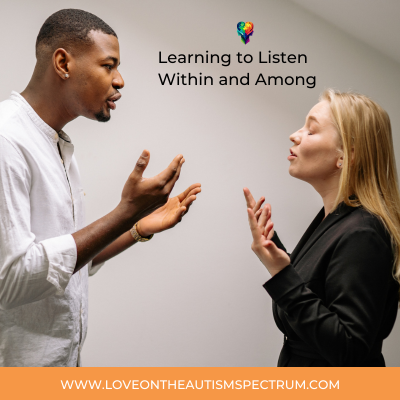
Interoception not only shapes our emotions but also significantly impacts our decision-making processes. Our management of emotions and distinct responsiveness to bodily cues can shape our decision-making, impacting everything from our daily choices to significant life decisions.
Besides its role in emotional experiences and decision-making, interoception also significantly influences cognitive functions, particularly implicit memory processes and intuitive decision-making. It operates distinctively from regular sensory perception, adding an additional layer to how we process and act on information.
Emotional Awareness and Regulation
Interoceptive awareness is closely connected to emotional regulation. Variations in interoceptive abilities can influence emotional reactivity and expression, shaping our emotional experiences and responses to different situations.
Emotional regulation is a multifaceted process that includes making room for emotions, recognizing them, identifying and accepting them, and fostering self-awareness. This process can be seen as a series of steps: situation → attention → appraisal → response. Interoception is crucial throughout this process, providing vital information about our body’s internal state and guiding our emotional responses.
Interoceptive accuracy, denoting an individual’s capacity to perceive and correctly interpret internal bodily signals, is fundamental to interoceptive abilities.
High interoceptive accuracy can enhance:
Emotional awareness
Emotional regulation
Mental health
Well-being
Understanding the impact of interoception on emotional awareness and regulation can provide valuable insights into the relationship between our bodies and our emotions. It highlights the importance of tuning into our bodies, understanding our internal signals, and using this knowledge to effectively regulate our emotions.
Interoception and Cognitive Processing
Interoception, described as the perception of one’s body’s internal state, is distinct from the processing of sensory input. Recent findings indicate interoceptive signaling impacts learning, memory, and other cognitive functions. Additionally, there may be a potential association between interoceptive processing and affective and cognitive abilities, such as empathy and theory of mind.
Numerous studies have indicated that interoception significantly influences implicit memory processes and intuitive decision-making. These findings suggest that interoception adds a layer of complexity to our cognitive processes, shaping how we learn, remember, and make decisions.
Interoception can potentially assist in decision-making, especially in circumstances of uncertainty. Individuals with a heightened awareness of their heartbeats demonstrated improved performance in financial gain and loss avoidance tasks. This suggests that interoceptive awareness can provide valuable insights, guiding our decisions in uncertain situations.
According to influential theories, bodily responses, such as interoception, are believed to contribute to the decision-making process in uncertain situations. This highlights the importance of interoception in our cognitive processes, suggesting that tuning into our bodies can enhance our decision-making skills and cognitive performance.
Individual Differences in Interoceptive Abilities
Having delved into the impact of interoception on our emotions and cognitive processes, it’s worth noting individual differences in interoceptive abilities. Various factors can influence these differences and can have a range of effects on mental and physical health, potentially contributing to conditions such as anxiety, depression, and eating disorders.
Interoceptive abilities consist of interoceptive attention, which pertains to how individuals notice signals from their body, and interoceptive accuracy, which characterizes their proficiency in perceiving those signals. These abilities can vary significantly between individuals, shaped by various factors such as age, genetics, and environmental influences.
Comprehending these differences in interoceptive abilities can yield meaningful insights into the connection between our bodies and minds. It can show why some people are more attuned to their bodies than others and how these differences can impact our emotional and cognitive experiences.
Factors Influencing Interoceptive Skills
Numerous factors can sway interoceptive skills, resulting in individual variations in interoceptive attention and accuracy. For instance, a notable negative correlation exists between age and interoceptive skills, indicating a potential decline in interoceptive awareness and skills as individuals age.

Genetics, in conjunction with other factors like immune and environmental factors, also influence interoceptive abilities. This highlights the complex interplay of various biological and environmental factors in shaping our interoceptive skills.
Environmental factors, including adverse childhood experiences, have been determined to significantly impact an individual’s interoceptive skills. This suggests that our early life experiences can shape our interoceptive abilities, influencing how we perceive and respond to our body’s internal signals.
Understanding these factors can provide valuable insights into why there are individual differences in interoceptive abilities. It can show why some people are more attuned to their bodies than others and how we can potentially enhance our interoceptive skills.
Consequences of Interoceptive Dysfunction
Diminished interoceptive abilities can result in a variety of health problems, including anxiety, depression, and eating disorders. These conditions can be understood as consequences of interoceptive dysfunction, highlighting the vital role of interoception in maintaining our mental and physical health.
Interoceptive dysfunction has been noted in anxiety disorders, suggesting a correlation between interoceptive dysfunction and anxiety. Modified interoceptive states play a role in anxiety symptoms, indicating that disruptions in interoception can contribute to the onset and progression of anxiety disorders.
Similarly, interoceptive dysfunction has been linked to abnormal activity of the insula in major depressive disorder (MDD) when perceiving heartbeats, which is believed to contribute to the development of depression. This suggests that disruptions in interoception can affect our mood and emotional state, potentially leading to the onset of depression.
Interoceptive dysfunction is also recognized as being compromised in individuals with eating disorders, impacting their perception of internal body states, which is essential for regular eating patterns. This highlights the role of interoception in regulating our eating behaviors, indicating that disruptions in interoception can contribute to the development of eating disorders.
Enhancing Interoception Through Contemplative Practices
Having examined the fundamentals of interoception, its effect on our emotions and cognitive processes, and variations in interoceptive abilities, we should now consider ways to improve our interoceptive skills.
One promising approach to enhancing interoception is through contemplative practices such as mindfulness meditation, yoga, and tai chi. These practices can improve interoceptive awareness by promoting a focus on internal bodily states. They seek to shift experience from distraction to attentional control, from effort to ease, and from a feeling of separation to connection, ultimately enhancing overall well-being.
Through these practices, individuals can cultivate presence – a sense of involvement and association with one’s body and surroundings. This can lead to an increased sense of agency, as conceptualized within the predictive coding framework, and is regarded as a notable outcome of these practices.
Mindfulness Meditation
Mindfulness meditation is a contemplative practice that can enhance individuals’ interoceptive awareness by allowing them to better focus on internal bodily signals and refrain from immediate reactions. This practice promotes a non-reactive state, enabling individuals to:
more effectively perceive and interpret their body’s internal signals
reduce stress and anxiety
improve emotional feeling and regulation
enhance self-awareness
cultivate a sense of calm and well-being
This practice promotes a non-reactive state, enabling individuals to perceive and interpret their body’s internal signals more effectively. Mindfulness meditation positively affects interoceptive sensitivity by focusing on specific sensations, like the breath or subtle reactive patterns. It changes interoceptive attention tendencies by guiding attention towards interoceptive sensations rather than cognitive evaluations. This shift in focus can enhance overall interoceptive awareness and accuracy.
In terms of physiological impacts, mindfulness meditation is linked to:
An increase in heart rate variability, specifically in the high-frequency band, indicates enhanced parasympathetic activation and improved physiological regulation
Increased granularity in interoceptive experience, offering a chance to become more attuned to the subtle, detailed dynamics of physiological arousal
Enhanced emotional regulation and well-being
This suggests that mindfulness meditation can enhance our awareness of our bodies and help us better understand and regulate our emotions.
Yoga and Tai Chi
Like mindfulness meditation, yoga, and tai chi are powerful tools for enhancing interoceptive awareness. Yoga contributes to interoceptive awareness by facilitating a heightened sense of presence and connection, thereby improving the individual’s capacity to regulate emotions. Similarly, Tai Chi aids in developing interoceptive skills by enabling practitioners to concentrate on subtle adjustments and direct attention toward interoceptive sensations.
These practices aid in self-regulation by inducing physiological changes encompassing top-down and bottom-up mechanisms to regulate cognition, emotions, behaviors, and peripheral functions. These alterations enhance emotion regulation and expand working memory capacity, suggesting that yoga and tai chi can enhance physical and mental well-being.
Practicing mindfulness in Yoga and Tai Chi bolsters emotional balance by enhancing the ability to regulate emotions, a core component of mindfulness integral to these activities. This suggests that individuals can cultivate a deeper connection with their bodies through regular practice, enhancing their emotional balance and overall well-being.
By connecting us with our bodies and enhancing our interoceptive awareness, yoga and tai chi can provide valuable tools for managing stress, enhancing our mental health, and improving our overall physical and mental health and quality of life. Whether you’re a seasoned practitioner or a beginner, these practices can offer a wealth of benefits for your mind and body.
Interoception Across the Lifespan
Interoceptive abilities aren’t fixed; they evolve and transform throughout our lives. From early childhood to older adulthood, our interoceptive skills evolve, shaping our experiences and interactions with the world around us. Understanding this development can provide valuable insights into how we can nurture and enhance our interoceptive abilities at different stages of life.
The development of interoception in childhood has a significant impact on personal development as it promotes:
Action understanding
Integration of physical and emotional states
Emotional regulation
Perspective-taking
Problem-solving
Recognition and management of emotions
However, as we age, our interoceptive abilities may decrease. This can reduce accuracy in identifying bodily signals such as heart rate, potentially impacting our emotional regulation and cognitive functioning. Despite these changes, it’s important to remember that we can enhance our interoceptive abilities at any age, offering a pathway to improved mental and physical health.
Interoceptive Development in Childhood
Interoceptive awareness generally develops during infancy and continues to evolve as children grow. This process entails enhancing their capacity to regulate interoceptive signals as they mature. It commences with the fundamental recognition of bodily sensations, such as hunger, and advances to identifying and comprehending more intricate emotions and sensations.
Developing interoceptive skills in children is a complex process involving the progression from fragmented internal bodily information to incorporation into a cohesive and unified internal representation. Generally, the capacity to regulate interoceptive signals is enhanced as children age, shaping their experiences and interactions with the world around them.
Interoceptive development influences a child’s cognition and emotional comprehension by contributing to their action understanding, mentalizing, and emotional and social cognition. This suggests that the development of interoceptive abilities in childhood can have far-reaching implications for a child’s cognitive, emotional, and social development.
Understanding the development of interoceptive abilities in children can provide valuable insights into the factors contributing to individual differences in these skills. It highlights the importance of nurturing interoceptive skills early, offering potential avenues for enhancing children’s emotional regulation and cognitive functioning.
Aging and Interoceptive Abilities
While interoceptive abilities develop and enhance during childhood, aging can lead to a decline in these skills. As individuals age, there is a notable reduction in interoceptive accuracy and a diminished inclination to link emotions with interoceptive sensations.
In fact, as individuals age, there have been documented alterations in interoceptive accuracy, suggesting distinct deficiencies in the perception of internal bodily signals among the elderly. This decline in interoceptive abilities can significantly affect older adults’ emotional regulation and cognitive functioning.
The decline in the inclination to connect emotions with bodily sensations and the general decrease in interoceptive awareness as people age indicate that older adults may undergo alterations in emotional regulation and cognitive functioning in connection to interoception.
Despite these changes, it’s important to note that we can enhance our interoceptive abilities at any age. We can cultivate our interoceptive skills through mindfulness meditation, yoga, and tai chi, which can enhance our emotional regulation, cognitive functioning, and overall well-being.
Practical Applications of Interoceptive Research
The study of interoception has substantial implications for diverse fields, from clinical settings to performance enhancement. By understanding the role of interoception in our emotions, cognitive processes, and physical health, we can develop strategies and interventions to enhance interoceptive abilities, potentially improving mental and physical health outcomes.
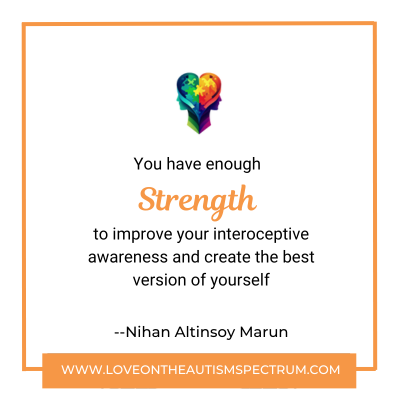
In clinical settings, interoception is applied in mental health therapy using methods like interoceptive exposure psychotherapy and interoceptive treatment interventions. By addressing interoceptive processes, in particular psychological therapies, clinicians can enhance treatment outcomes for conditions like PTSD and chronic pain.
Regarding performance enhancement, interoceptive accuracy, referring to the accurate perception of internal bodily sensations, has been linked with improved physical performance in athletes. Interoceptive processes play a crucial role in regulating physical effort, thereby contributing to the management of exertion levels during athletic activities and training.
Interoceptive Training in Clinical Settings
Clinical settings can employ interoceptive training to treat a range of psychological disorders, like anxiety, depression, and PTSD. This form of training involves specific techniques such as:
Interoceptive exposure therapy
Focusing on and perceiving the sensation and rhythm of exhaled breath
Employing the intention to experience uncomfortable body sensations
Replicating physical sensations linked to anxiety
Interoceptive training can enhance interoceptive awareness and regulation, improving mental health outcomes. For instance, it has been observed to decrease feelings of stress and anxiety, particularly in cases of anxiety disorders.
In the treatment of PTSD, contemplative practices play a role in enabling participants to:
Engage in perceptual inference
Recognize emotional triggers of dissociation through sensory cues
Maintain awareness of their bodies rather than resorting to habitual, active regulatory responses.
These findings highlight the potential of interoceptive training in treating various psychological disorders. Enhancing interoceptive awareness and regulation can improve mental health outcomes, offering a promising avenue for future research and clinical interventions.
Enhancing Performance Through Interoceptive Awareness
Developing interoceptive skills can enhance performance across various areas, from sports to academics to professional environments. By tuning into our bodies and understanding our internal signals, we can make better decisions, manage stress more effectively, and enhance our overall performance. We personally follow Kelly Mahler, an Occupational Therapist. She has exciting offerings for people who want to learn more about navigating their interception challenges.
Scientific evidence indicates that interoceptive awareness enhances performance by facilitating conscious awareness, regulating emotions, and accurately monitoring internal signals. In professional environments, interoceptive awareness allows individuals to recognize, access, comprehend, and react suitably to internal cues, thereby improving work performance and aiding in managing psychological stress and physical conditions.
In the academic sphere, interoceptive awareness plays a significant role in contributing to academic success by:
Regulating emotions
Attention
Cognitive processes
Improving self-assessment
Enhancing academic self-efficacy
One may consider engaging in body scan meditation or grounding exercises emphasizing sensory focus to enhance interoceptive awareness for improved performance. Numerous practices and exercises are designed to augment interoceptive awareness and precision.
Summary
Our exploration of interoception has taken us on a fascinating journey through the silent dialogue that occurs within our bodies. We’ve delved into the foundations of interoception, explored its impact on our emotions and decision-making processes, and examined individual differences in interoceptive abilities. We’ve also looked at the development of interoceptive abilities across our lifespan and discussed how we can enhance these skills through contemplative practices.
The study of interoception holds significant implications for our mental and physical health, offering potential avenues for improving emotional regulation, cognitive functioning, and overall well-being. By understanding and tuning into our body’s internal signals, we can become more aware of our emotions, make better decisions, and enhance our performance in various domains.
As we unravel the mysteries of interoception, we can look forward to a future where we can harness our body’s internal communication system to enhance our well-being and improve our lives. So, let’s tune into our bodies, understand our internal signals, and harness the power of interoception to live healthier, happier lives.
Frequently Asked Questions
What is an example of interoception?
Interoception involves being aware of internal sensations in the body, such as hunger, fullness, and emotional states, and using this information to regulate emotions and behaviors. For example, feeling anxious can cause physical sensations like a racing heart and sweating, which interoception helps to understand and manage.
What are the signs of poor interoception?
Signs of poor interoception may include difficulty recognizing sensations like hunger, fullness, temperature, or thirst. Impaired interoception can also lead to challenges in self-regulation.
What is interoception in ADHD?
Interoception in ADHD involves observing one’s physiological state without judgment, which can help achieve optimal functioning.
What is interoception in autism?
Interoception in autism refers to the ability to sense and understand internal bodily sensations, which can significantly impact emotional regulation, self-awareness, and social relationships in autistic children. This sensory system involves consciously or unconsciously recognizing and responding to physical and emotional states.
What is interception, and how does it impact our health?
The interoceptive process is the ability to sense, interpret, and respond to internal bodily signals. It plays a crucial role in maintaining homeostasis and overall well-being, influencing our ability to regulate emotions and potentially impacting our susceptibility to mental health issues.
